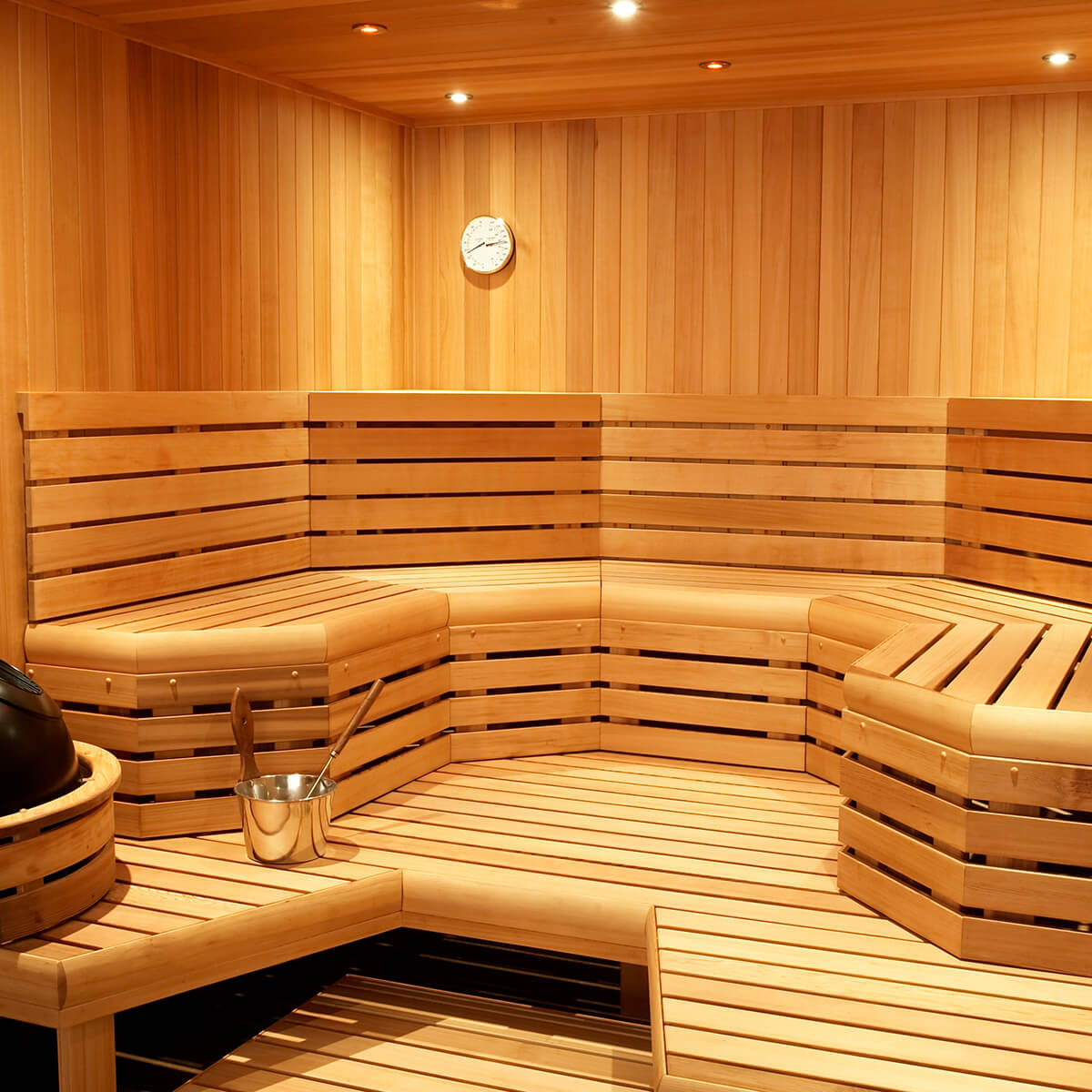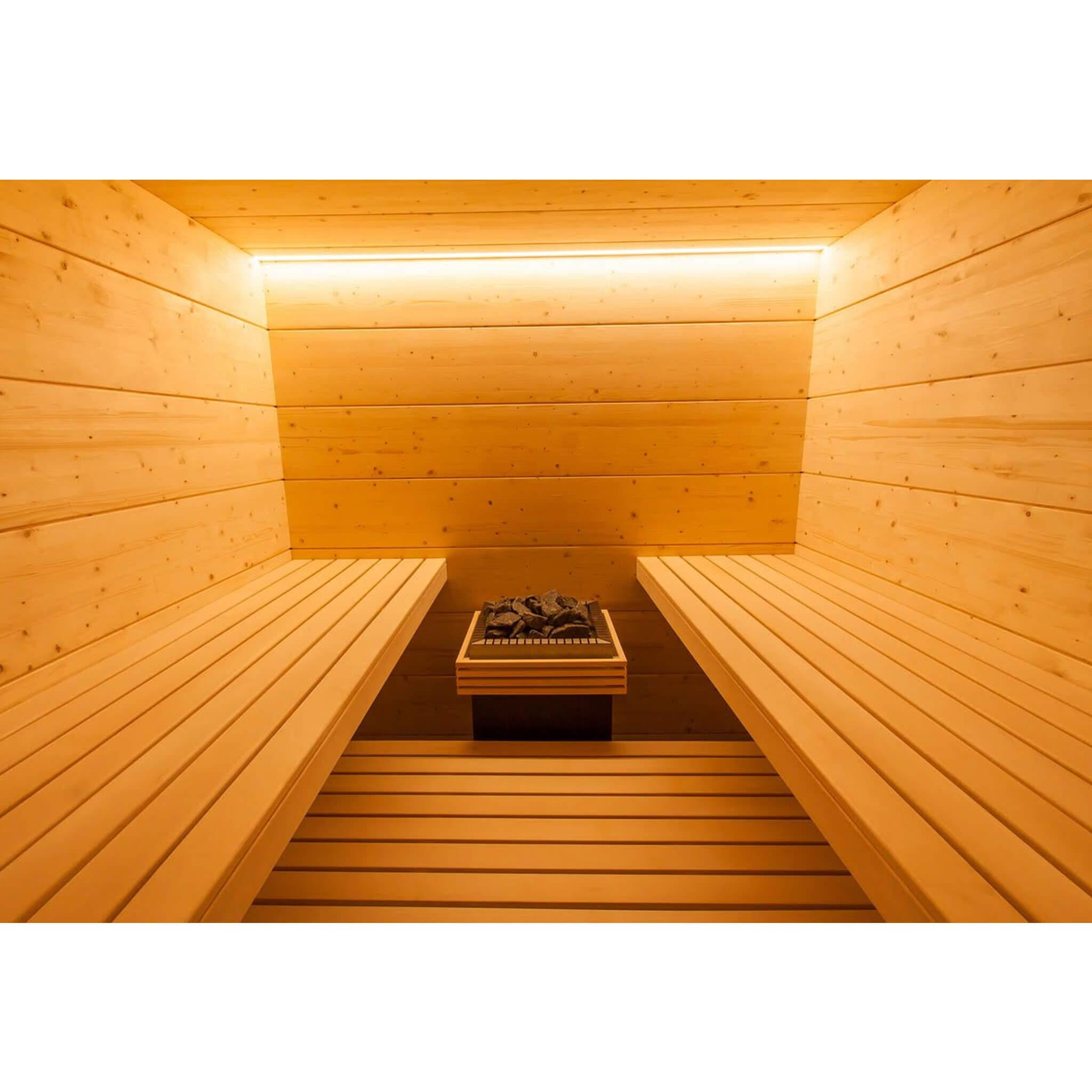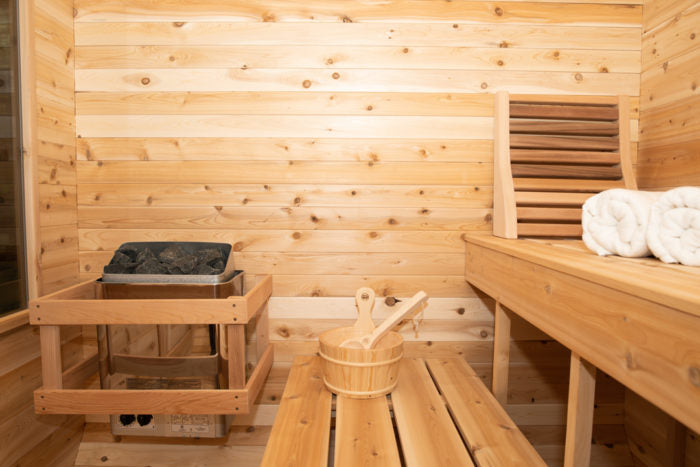9 Easy Facts About Traditional Sauna Described
More About Traditional Sauna
Table of ContentsThe Traditional Sauna PDFsThe Facts About Traditional Sauna UncoveredThe Buzz on Traditional SaunaThe 4-Minute Rule for Traditional Sauna3 Simple Techniques For Traditional Sauna
The majority of the weight shed in a sauna is water loss and is re-gained upon rehydrating. Nevertheless, undoubtedly sauna can be a fundamental part of a healthy and balanced weight loss program. To consider the differences between conventional and IR saunas, I will certainly separate these into verifiable, theoretical, and made distinctions.Therefore, the best factor in the saunawhich goes to the ceiling directly above the sauna heateris typically between 185 and 190 F. Claims that a standard sauna goes beyond 200 F is just not real and not appropriate for electrical saunas marketed in the United States. The temperature for a far-infrared sauna is usually established in between 120 and 140 F; nonetheless, unlike the standard sauna, the objective in and IR area is not to attain a heat.

When a typical sauna has been properly heated up, the sauna wall surfaces are warm, the air temperature level has achieved set temperature level and the rocks are incredibly warmed. As a fascinating side note, the heated wall surfaces and the rocks are discharging far-infrared heat, combined with the warmed air, to create an "covering heat".
More About Traditional Sauna
When the heat is achieved, the components cycle on and off to maintain the high temperature. The majority of conventional sauna customers take pleasure in pouring water over the rocks to produce heavy steam to elevate sauna humidity levels. The benefits of putting water over the rocks include: making the area more comfortable, moistening the nasal flows, and permitting the use of aromatherapy by mixing vital oils with the water.

When the power gets in the body, it triggers the body temperature to boost and inevitably leads to sweating. In an infrared sauna it's important for the emitters/heaters to remain on almost constantly. Since there is no mass of rocks to retain heat, the sauna will cool down if the emitters turned off.
Things about Traditional Sauna
As pointed out above, the sauna bather in an infrared area intends to position himself in front of running emitters to obtain optimal gain from the warmth. The home heating time for the two areas can be extremely different, depending on just how the rooms are made use of. For a standard sauna, a bather ought to allow 30-40 mins for the room to attain a preferred temperature level and to appropriately pre-heat the rocks.

A well created sauna will typically achieve a temperature level of 150-160 F in concerning 30-40 minutes. For hotter temperatures, the room may need to warm for a longer duration.
To some, 15 mins was "thrown away" while the infrared power heated the timber panels as opposed to heating a body, while others find a pre-heated room to be much more comfortable and believe a raised beginning temperature level is essential to start sweating. The size of advised usage for each space is roughly the exact same (10-15 mins per session); nevertheless, because of the reduced air temperature levels and the capacity to really feel the impacts of infrared warm quicker than a typical sauna, it is not unusual for an individual YOURURL.com to spend an overall of 20-30 mins in an infrared sauna.
What Does Traditional Sauna Do?

The average cost per kWH of power in the U.S. is around $0.11, so a 4.5 kW heating system will set you back approximately $.50 to run for one hour, if the heating system runs constantly for one hour. Generally a sauna heating system will run for 75% of the very first hour and 50% of succeeding hours on given that the components cycle once the set temperature is accomplished.
A 2 person far-infrared room is generally physically smaller than a standard sauna, frequently regarding 4' x 4' or smaller sized. The IR furnace is generally 1.5-1.7 kW utilizing a 120 volt 15 amp plug-in solution. Given that the space can be made use of faster than a sauna room, we will certainly assume the space is made use of for to of an hour consisting of warm up time.
Finally, there is a rarely reviewed distinction in the social experience in between both spaces. While our society has actually shed some of the social benefit of the traditional sauna experience, it can be really socially rewarding (Traditional Sauna). More hints From family time in the her explanation sauna, to heart-felt conversations with loved ones, to sauna partiesthe conventional sauna experience can result in intimate socializing
What Does Traditional Sauna Mean?
A lot of higher end infrared spaces consist of colored light therapy, sound systems and full-glass fronts.